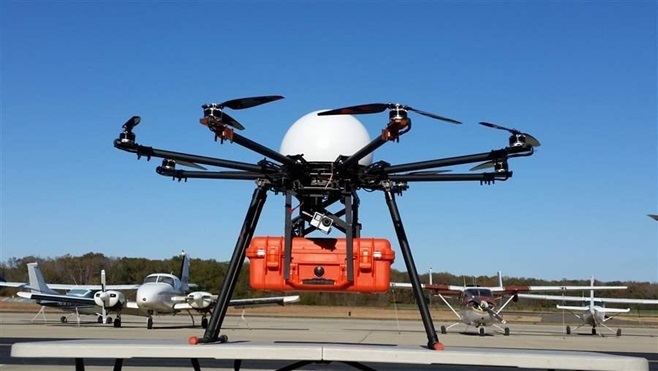By combining the two technologies, drones and telemedicine, a doctor miles away could instruct a layman at the scene in how to provide rudimentary, but perhaps life-saving, medical care.
Subbarao’s project, which he began the year after the Hattiesburg tornado, has now produced three prototypes and conducted several demonstration flights. It appears to be the most advanced attempt to equip a drone with audiovisual equipment so doctors and survivors can interact in an emergency. Emergency management officials from Dallas, New York City, Phoenix and Washington, D.C., have reached out to him, as have officials from Europe, the Middle East and Africa.
Drone technology has been around for at least half a century, and for years people in health care have speculated about the medical use of drones, for example to transport medicines, organs for transplants, blood supplies and anti-venom serums.
Lee Smithson, director of the Mississippi Emergency Management Agency, said, “This is going to be a phenomenal way to provide immediate medical attention anywhere in the state.” Noting Mississippi’s frequent poor rankings among states in measures of well-being, he added, “It’s about time that Mississippi leads the nation in something good for a change.”
The plan, Smithson said, is to eventually station a drone in as many as nine different areas of the state, so every place in Mississippi is within two hours of a medical drone.
Chris Sawyer, medical director of Remote Area Medical, isn’t surprised by the broad interest in the project. “It is revolutionary,” he said.
It’s also not altogether a surprise that the idea of an interactive medical drone arose in Mississippi. The state is frequently visited by tornadoes, some of which have caused substantial numbers of deaths and injuries. The state has a shortage of doctors and, according to Smithson, many areas of the state cannot be reached quickly by medical responders.
The current prototypes can only fly up to 5 miles, at speeds up to 40 mph, Lott says, but he’s working on another model that could travel far greater distances, up to 100 miles.
The drones carry a suitcase with medical supplies and equipment. The audiovisual equipment comes in two varieties: stand-alone cameras with microphones and speakers, and interactive goggles that can be worn by someone on the ground. In either case, a doctor from a remote location could instruct a survivor to train the camera on victims or parts of the body to assess their condition.
The doctor could give instructions on taking readings such as blood pressure, temperature, heart rate, or sugar or oxygen levels, using equipment dropped by the drone. And the doctor could talk a survivor through ways of giving aid, such as applying tourniquets, cleaning, clotting or bandaging wounds, and injecting medicines.

WILLIAM CAREY UNIVERSITY COLLEGE OF OSTEOPATHIC MEDICINE
Reference:Huff Post




